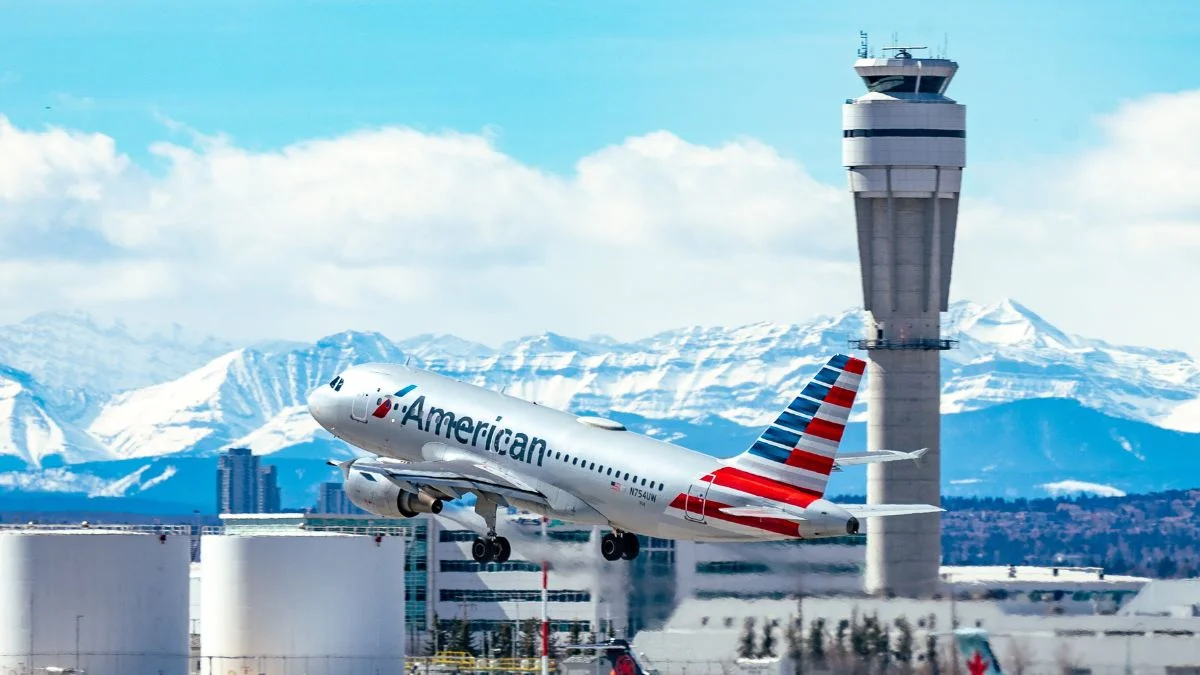American Airlines Flexible Vs. Fully Flexible: Understanding the Differences and Making the Right Choice

As participants in Amazon Associates and other programs, we earn from qualifying purchases. This comes at no additional cost to you. For more details, see our Affiliate Disclosure.
In the fast-paced world of modern travel, flexibility is no longer just an option; it’s a necessity. As airline ticket policies evolve to accommodate the unforeseen circumstances and fluid schedules of today’s travelers, understanding these policies can prove challenging. This article aims to demystify one of the common sources of confusion among passengers – the difference between ‘Flexible’ and ‘Fully Flexible’ fares in the context of American Airlines.
By providing a simple, comprehensive comparison, we hope to arm you with the knowledge you need to choose the fare that best suits your travel needs and to navigate changes or interruptions with ease.
An Overview of American Airlines’ Flexible and Fully Flexible Fares
American Airlines, like many other global carriers, offers a range of fare options to cater to the diverse needs of its passengers. Two of these fare options are the ‘Flexible’ and ‘Fully Flexible’ tickets. Both these categories are designed to offer more leeway to passengers who anticipate potential changes to their travel plans, but they differ in the degree of flexibility and the cost associated with them.
‘Flexible’ fares, as the name implies, allow travelers to make certain alterations to their travel itinerary without incurring the hefty change fees typically charged for lower-tier fares. These modifications could include changing the travel date or even the destination, subject to availability and fare differences.
‘Fully Flexible’ fares take it a step further. These fares offer the highest level of flexibility and are perfect for travelers who value peace of mind and the freedom to change plans without any penalties. With a ‘Fully Flexible’ ticket, you can make unlimited changes to your travel itinerary without having to worry about change fees, and in most cases, these fares are also fully refundable.
While both fare types certainly provide a lot more freedom than more restrictive fare options, they each come with their own set of rules and considerations. In the following sections, we will delve into these specifics and provide a clearer understanding of when to choose which fare type for your travel needs.
Understanding Flexible Fares: Features and Limitations
‘Flexible’ fares offered by American Airlines are a step up from the more restrictive ‘Basic Economy’ or ‘Main Cabin’ fares, providing passengers with an increased level of freedom when it comes to altering travel plans. When you opt for a ‘Flexible’ fare, you’re given the ability to make changes to your flight schedule that could include modifications to your travel dates or destinations. However, there are still certain features and limitations that come with this fare class.
Features of Flexible Fares
One of the main features of the ‘Flexible’ fare is the ability to make changes to your itinerary without being charged the usual change fees that can often be quite steep. This is a significant advantage for passengers whose plans might alter between the time of booking and the actual travel date.
Another benefit of ‘Flexible’ fares is that they often come with preferred seating options and additional frequent flyer points, which can prove beneficial for regular travelers.
Limitations of Flexible Fares
While ‘Flexible’ fares offer more leniency than lower-tier fares, they do have certain limitations. For instance, while you won’t be charged a change fee, you will have to pay any difference in fare if your new flight is more expensive than the original. This could potentially lead to substantial extra costs, especially if the new flight is during peak travel times or the change is made at short notice.
Additionally, while ‘Flexible’ fares do offer more flexibility than lower fare categories, they are not as accommodating as ‘Fully Flexible’ fares. ‘Flexible’ fares may still have certain restrictions in place, such as blackout dates during which changes are not permitted, or limitations on how close to the departure time changes can be made.
Lastly, ‘Flexible’ fares are typically more expensive than ‘Basic Economy’ or ‘Main Cabin’ fares, so passengers will need to weigh the benefits of the added flexibility against the increased cost when making their travel plans.
What Makes a Fare Fully Flexible? – Perks and Parameters
‘Fully Flexible’ fares, often the premium tier in American Airlines’ ticket offerings, represent the pinnacle of flexibility for air travelers. Designed to accommodate the needs of those who value absolute freedom in altering their travel plans, these fares come with a variety of perks but also carry certain parameters that need to be understood.
Perks of Fully Flexible Fares
One of the primary perks of opting for a ‘Fully Flexible’ fare is the ability to make unlimited changes to your flight details without incurring any change fees. Whether you need to alter your departure date, switch your destination, or even cancel your journey altogether, ‘Fully Flexible’ fares provide this liberty without any penalties.
Another significant advantage is the refundability aspect. Unlike lower-tier fare classes, ‘Fully Flexible’ fares are typically fully refundable. Should you need to cancel your flight, you can expect to receive a full refund, often in the original form of payment, which is a considerable benefit for uncertain travel plans.
Additionally, ‘Fully Flexible’ fares usually come with added perks like priority boarding, extra baggage allowance, and a higher rate of mile accumulation for frequent flyer programs. This can enhance your travel experience and provide more value for your fare.
Parameters of Fully Flexible Fares
While ‘Fully Flexible’ fares provide an extensive range of freedoms, there are still some parameters and rules to bear in mind. For instance, while change fees are not applied, any fare difference still needs to be paid if the new flight is more expensive than the initial one. However, if the new flight is cheaper, the difference is usually refunded.
Also, changes or cancellations typically need to be made before the departure of the original flight to take advantage of the flexibility features. If changes are made after the departure time, the ticket might be considered a ‘no-show’, which could result in penalties or loss of the ticket value.
Finally, ‘Fully Flexible’ fares come with a higher price tag compared to other fare classes. The considerable flexibility and added perks of these fares come at a cost, making them the most expensive offering. Therefore, travelers need to carefully consider whether the flexibility and additional benefits justify the higher price point.
Comparing the Costs: Flexible Vs. Fully Flexible
Choosing between ‘Flexible’ and ‘Fully Flexible’ fares often comes down to a trade-off between cost and flexibility. While both fare types offer greater freedom than standard ticket classes, they differ in terms of pricing. In this section, we’ll delve into a comparative analysis of these two fare types from a cost perspective.
Cost of Flexible Fares
‘Flexible’ fares are generally more affordable than ‘Fully Flexible’ fares. However, they are priced higher than the most basic fare types like ‘Basic Economy’ or ‘Main Cabin’ tickets. The additional cost is essentially a premium you pay for the ability to modify your travel itinerary without incurring change fees.
It’s important to remember, though, that while you’re spared the change fees, any difference in fare due to your modifications will still apply. Therefore, changes can still result in extra costs, particularly if your new flight is more expensive than the original.
Cost of Fully Flexible Fares
On the other hand, ‘Fully Flexible’ fares come with a higher price tag, making them the most expensive fare type offered by American Airlines. The significant increase in cost over ‘Flexible’ fares reflects the full spectrum of benefits you get, including unlimited changes without fees, full refundability, and additional perks like priority boarding or extra baggage allowance.
The extra cost of a ‘Fully Flexible’ fare buys more than just flexibility; it buys peace of mind. If there’s a chance that your plans might change, or if you simply value the ability to adapt your travel schedule as you wish, the extra cost might well be worth it.
Choosing the Right Fare for Your Budget
In conclusion, the choice between ‘Flexible’ and ‘Fully Flexible’ fares depends heavily on your travel plans, budget, and personal preferences.
‘Flexible’ fares might be the more cost-effective option if you anticipate minor changes to your schedule, while ‘Fully Flexible’ fares could be the best choice if your travel plans are highly uncertain or if you value the additional perks they offer.
When to Opt for Flexible and When to Go Fully Flexible
The choice between ‘Flexible’ and ‘Fully Flexible’ fares often comes down to your individual travel needs, your budget, and the level of uncertainty surrounding your plans. Here are some considerations to guide your decision.
When to Opt for Flexible Fares
Choosing a ‘Flexible’ fare can be a smart move if:
- Your travel plans are mostly set, but there’s a small chance they could change. ‘Flexible’ fares allow you to make changes without incurring a change fee, providing a safety net for minor adjustments.
- You want to balance cost with some degree of flexibility. ‘Flexible’ fares are more affordable than ‘Fully Flexible’ fares, making them a good middle-ground option for budget-conscious travelers who still want some wiggle room in their plans.
- You’re traveling during non-peak times when fare differences (if changes are made) are less likely to be significant.
When to Go Fully Flexible
Opting for a ‘Fully Flexible’ fare could be the best choice if:
- Your travel plans are highly uncertain or liable to change. The ‘Fully Flexible’ fare provides the highest level of flexibility, allowing you to make unlimited changes or even cancel your trip entirely without penalty.
- You’re booking far in advance. The further out you book, the more likely it is that your plans could change, making the flexibility of this fare more valuable.
- You value the additional perks. ‘Fully Flexible’ fares typically come with added benefits like priority boarding, extra baggage allowance, and higher mile accumulation. If these benefits align with your travel needs, the higher cost could be well worth it.
The decision ultimately depends on your personal circumstances and how much you value the ability to change your plans versus the cost involved. Consider your own situation and use the above guidelines to make the most informed decision for your travel needs.
In the following section, we will unpack the cancellation and change policies for both fare types to provide further clarity.
The Fine Print: Unpacking Cancellation and Change Policies
Navigating the ins and outs of airline fare policies can feel like decoding fine print. However, understanding these policies, especially when it comes to cancellations and changes, is crucial for making an informed decision. Let’s delve into the cancellation and change policies for American Airlines’ ‘Flexible’ and ‘Fully Flexible’ fares.
Cancellation and Change Policies for Flexible Fares
With ‘Flexible’ fares, the major advantage is the ability to make changes to your itinerary without incurring change fees. However, there are a few things to keep in mind:
- While the change fee is waived, you’re still responsible for any fare difference if the new flight is more expensive.
- Changes must usually be made before the original flight’s departure time to avoid being considered a no-show, which could result in forfeiture of the ticket value.
- Although ‘Flexible’ fares are more lenient than lower-tier fares, they may still have certain restrictions in place, such as blackout dates or limitations on when changes can be made.
As for cancellations, ‘Flexible’ fares may not be fully refundable unless cancelled within 24 hours of booking, as per the Department of Transportation’s regulations. Any refund after this period is typically subject to airline policy and might be returned as a future travel credit rather than a cash refund.
Cancellation and Change Policies for Fully Flexible Fares
‘Fully Flexible’ fares offer the highest level of flexibility. Here are the key points:
- You can make unlimited changes without incurring change fees. However, fare differences still apply if your new flight is more expensive.
- These fares are typically fully refundable. If you need to cancel your flight, you can expect to receive a full refund, usually in the original form of payment. But ensure to cancel prior to the departure time of your flight.
- There’s more flexibility on when changes can be made, with fewer restrictions compared to ‘Flexible’ fares.
Understanding these policies can save you from unexpected costs and make your travel experience smoother.
Expert Tips: Maximizing Benefits from Your Fare Choice
The fare you choose can significantly impact your travel experience and budget. Here are some expert tips to help you maximize the benefits from your fare choice, whether it’s ‘Flexible’ or ‘Fully Flexible’.
For ‘Flexible’ Fares:
- Plan Changes Ahead of Time: If you anticipate needing to change your plans, try to do it as early as possible. This can help minimize the fare difference you may need to pay if your new flight is more expensive.
- Consider Travel Insurance: While ‘Flexible’ fares do provide some leniency, they’re not fully refundable. To safeguard against unexpected events, consider investing in travel insurance that covers flight cancellations.
- Leverage Your Airline Loyalty Program: ‘Flexible’ fares often accrue more airline miles than lower-tier fares. Be sure to include your frequent flyer number when booking to maximize your rewards.
For ‘Fully Flexible’ Fares:
- Take Advantage of Perks: ‘Fully Flexible’ fares often come with additional benefits, like priority boarding or extra baggage allowance. Make sure you take full advantage of these.
- Monitor Fare Changes: After booking a ‘Fully Flexible’ ticket, keep an eye on fare changes. If the price drops, you can typically change to the lower fare without a change fee and get refunded the difference.
- Don’t Forget to Cancel: If you can’t make the flight, remember to cancel before the departure time. Even though ‘Fully Flexible’ fares are highly accommodating, not cancelling in time may lead to penalties.
Remember, the goal is to balance cost and convenience based on your personal travel needs. Whether you opt for a ‘Flexible’ or ‘Fully Flexible’ fare, understanding the benefits and rules associated with each can help ensure a smooth and enjoyable travel experience.






